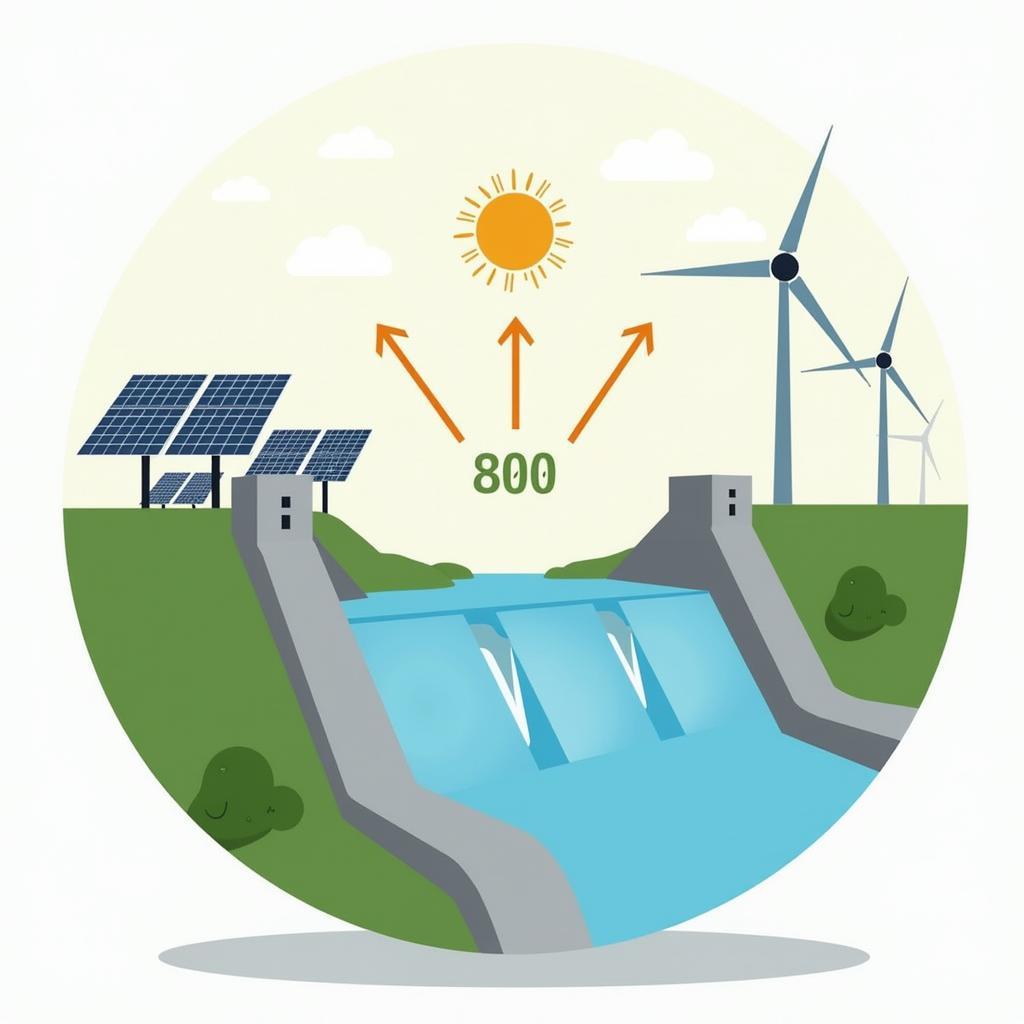The topic of renewable energy and carbon neutrality has become increasingly prevalent in IELTS Writing Task 2, appearing in various forms across different test versions. Based on analysis of past papers and current trends, this theme has appeared approximately 15-20% of the time in environment-related questions since 2019.

Analysis of Question Type
Some people believe that the rapid development of renewable energy sources is the most effective way to achieve carbon neutrality. To what extent do you agree or disagree with this statement?
This question type is an agree/disagree essay that requires candidates to:
- Present a clear position on the effectiveness of renewable energy
- Provide supporting arguments and examples
- Consider potential counterarguments
- Draw a logical conclusion
Band 9 Sample Essay
Climate change has emerged as one of the most pressing challenges of our time, and the transition to renewable energy sources is often cited as a crucial solution for achieving carbon neutrality. I strongly agree that rapidly developing renewable energy technologies represents the most effective approach to reaching this vital environmental goal.
The primary advantage of renewable energy development lies in its direct impact on reducing greenhouse gas emissions. When countries shift from fossil fuel-based power generation to solar, wind, or hydroelectric sources, they immediately decrease their carbon footprint. For instance, Denmark has successfully reduced its carbon emissions by 40% since 1990 primarily through its ambitious wind power program, which now supplies over 40% of the nation’s electricity needs.
Furthermore, the accelerated development of renewable technologies creates a positive feedback loop that enhances their effectiveness. As more resources are invested in research and development, renewable energy becomes increasingly efficient and cost-effective. This transformation is evident in the dramatic decrease in solar panel costs, which have fallen by 90% over the past decade, making clean energy accessible to more communities and industries.
However, while renewable energy development is crucial, it must be complemented by other measures to achieve complete carbon neutrality. Energy efficiency improvements, sustainable transportation systems, and changes in consumer behavior all play essential supporting roles. Nevertheless, these measures would be far less effective without the foundation of a clean energy infrastructure.
In conclusion, I firmly believe that the rapid development of renewable energy sources is indeed the most effective pathway to carbon neutrality. The direct emissions reductions and technological improvements that result from prioritizing renewable energy make it the cornerstone of any successful climate strategy.
Analysis of Band 9 Essay
- Clear position maintained throughout
- Sophisticated vocabulary and complex sentences
- Well-developed arguments with specific examples
- Coherent paragraphing with clear progression
- Excellent use of linking devices
- Counter-argument acknowledged and addressed
- Word count: 275
Band 6.5 Sample Essay
Nowadays, many people think renewable energy is the best way to get carbon neutrality. I agree with this idea because it has many benefits for our environment.
First, renewable energy is good because it doesn’t make pollution. When we use solar panels and wind turbines, we don’t need to burn coal or oil. This means we can make electricity without making CO2. For example, in my country, some cities are using solar panels on buildings and it helps reduce pollution.
Also, renewable energy is becoming cheaper every year. In the past, it was very expensive to install solar panels, but now many people can afford them. This means more people and companies can switch to clean energy. When more people use renewable energy, we can reduce carbon faster.
But some people say renewable energy is not reliable because the sun doesn’t shine all the time and wind doesn’t blow every day. This is a problem, but new technology like batteries can help solve it. Also, we can use different types of renewable energy together.
In conclusion, I think renewable energy is the most effective way to achieve carbon neutrality because it is clean and becoming more affordable. However, we need to solve some problems to make it work better.
Analysis of Band 6.5 Essay
- Clear position but simpler arguments
- Basic vocabulary with some repetition
- Less sophisticated sentence structures
- Basic linking words
- Limited range of examples
- Word count: 180
Key Vocabulary
- carbon neutrality (n) /ˈkɑːbən njuːˈtræləti/ – state of zero net carbon emissions
- renewable energy (n) /rɪˈnjuːəbəl ˈenədʒi/ – energy from natural sources that are constantly replenished
- greenhouse gas emissions (n) /ˈɡriːnhaʊs ɡæs ɪˈmɪʃənz/ – release of gases that trap heat in Earth’s atmosphere
- feedback loop (n) /ˈfiːdbæk luːp/ – system where output affects input
- cost-effective (adj) /kɒst ɪˈfektɪv/ – providing good value for money
- technological advancement (n) /ˌteknəˈlɒdʒɪkəl ədˈvɑːnsmənt/ – progress in technology
- infrastructure (n) /ˈɪnfrəstrʌktʃə/ – basic physical systems of a country
- sustainable (adj) /səˈsteɪnəbəl/ – able to maintain at a certain level without depleting resources
For practice, try writing your own essay on this alternative prompt:
“Some argue that individual actions are more important than technological solutions in achieving carbon neutrality. Discuss both views and give your opinion.”
Share your practice essays in the comments for feedback and improvement suggestions.